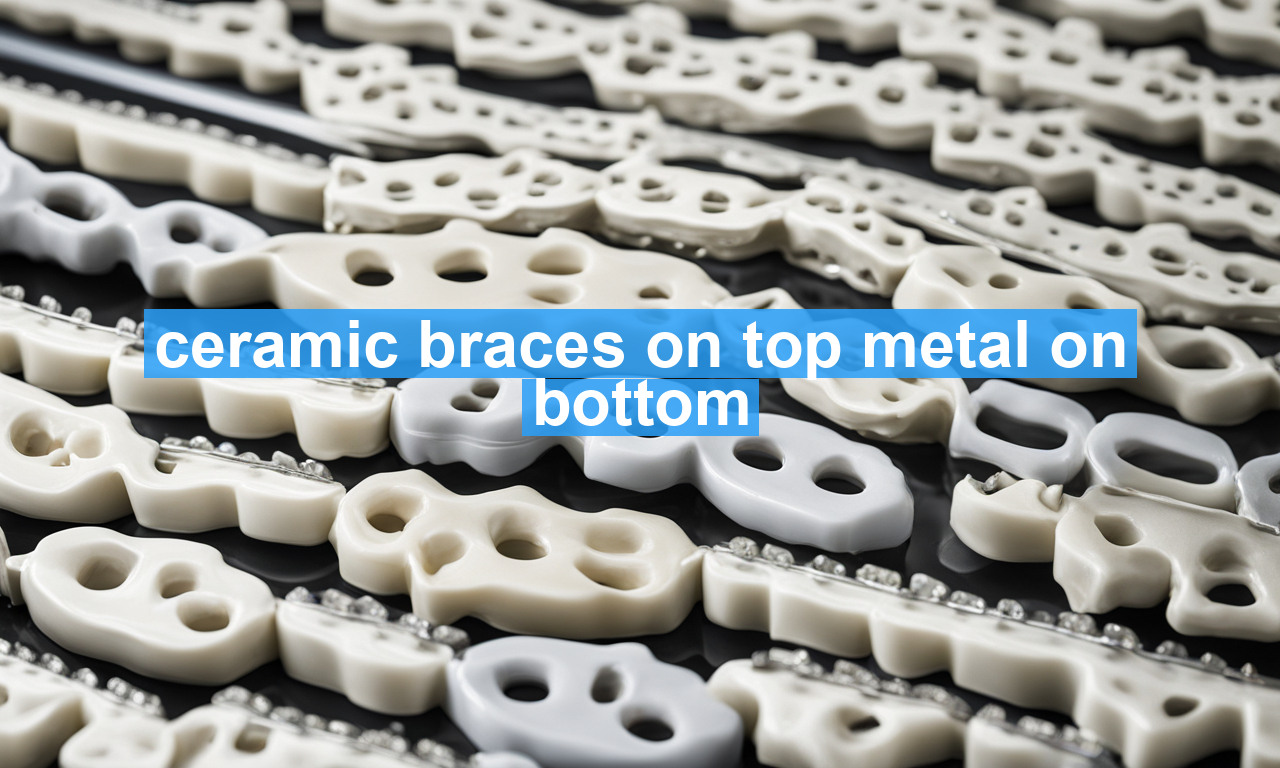Imagine a smile that seamlessly blends elegance with durability. That’s exactly what you can achieve with ceramic braces on top and metal braces on the bottom. This innovative approach pairs the understated, aesthetic appeal of ceramic braces with the strength and affordability of metal braces. Many people are choosing this popular orthodontic option to enjoy the best of both worlds without compromising their smile or their wallet. In this article, we’ll delve into why this combination is gaining traction, how it measures up against other orthodontic options, and what you can expect during your treatment journey.
Why Choose Ceramic on Top and Metal on Bottom?
Opting for ceramic braces on the upper teeth and metal braces on the lower teeth is more than just a matter of aesthetics. It’s a strategic choice that considers both visibility and function. Here’s why it’s a game-changer:
Understanding the Cost Factor
One important consideration is cost. Many patients find that combining ceramic and metal braces helps manage expenses while still achieving a visually appealing result. While purely ceramic braces tend to be pricier, this mixed approach provides a middle ground.
According to Healthdirect Australia, metal braces can typically cost between $3,000 and $7,000, while ceramic braces can range from $4,000 to $8,000. The mixed braces option offers a price point that can be more budget-friendly for those looking to optimize their dental expenditure without completely sacrificing aesthetics.
How Does Treatment Work?
The treatment process for ceramic-on-top and metal-on-bottom braces follows the same fundamental principles as any orthodontic treatment. However, there are some notable aspects tailored to this specific setup:
Duration of Treatment
In general, the duration for wearing braces varies depending on individual cases and the severity of the dental issues being corrected. According to Orthodontics Australia, most orthodontic treatments last between one and three years. It’s essential to follow your orthodontist’s advice and maintain regular appointments to ensure the best results in the shortest time.
Are They Effective?
Some may wonder if this unique combination of materials affects the overall efficacy of orthodontic treatment. The good news is, both ceramic and metal braces are effective in correcting a variety of dental issues, including malocclusions, crowding, and spacing problems. The choice of material does not hinder treatment effectiveness but rather enhances the patient’s experience.
Weighing the Pros and Cons
It’s important to weigh the pros and cons of ceramic on top, metal on bottom braces to determine if they suit your personal needs:
Pros:
Cons:
Making the Decision
Choosing the right braces is highly personalized and should involve a detailed conversation with your orthodontist. It’s essential to consider your aesthetic preferences, budget, and lifestyle. If you’re someone who values a discreet, cost-effective solution without sacrificing dental health, ceramic-on-top and metal-on-bottom braces could be the ideal choice.
By combining the benefits of both ceramic and metal options, this innovative approach offers a practical and appealing solution for effective dental correction. Be sure to explore all your options, as the right choice will lead to not just a straight smile, but also increased confidence and improved oral health.
For more insight into various types of orthodontic treatments and to make an informed decision, check out this comprehensive guide by the American Association of Orthodontists.
In the ever-evolving world of orthodontics, ensuring you align your smile with your personal style and needs is the key to a happy treatment journey.

